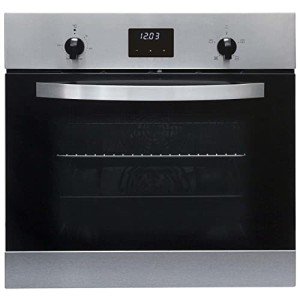Understanding Oven Hobs: The Heart of Culinary Crafting
In the world of modern-day cooking areas, the oven hob stands out as an important home appliance. Not only is it a main component for cooking a variety of meals, however it also influences kitchen aesthetics, performance, and efficiency. This post delves into the kinds of oven hobs, their features, advantages, and upkeep pointers. In addition, it attends to some frequently asked concerns to supply a comprehensive understanding of this essential kitchen appliance.
Types of Oven Hobs
Oven hobs can be classified into numerous types based on their energy source and design. Understanding these variations can help consumers make notified choices when selecting the perfect hob for their kitchen needs.
1. Gas Hobs
Gas hobs use gas or lp as fuel, offering accurate temperature control and instant heat. They are preferred by lots of chefs for their ability to supply visual feedback through flame.
Pros:
- Quick heat-up time.
- Precise temperature level adjustments.
- Compatible with all kinds of cookware.
Cons:
- Requires a continuous gas supply.
- Safety worry about open flames.
- Requires more upkeep.
2. Electric Hobs
Electric hobs are powered by electricity and feature smooth glass or ceramic surfaces. They typically can be found in 2 types: coil and strong.
Pros:
- Sleek appearance.
- No open flames, minimizing safety risks.
- Easy to clean up.
Cons:
- Slower to heat up and cool off.
- May require specific pots and pans (induction).
- Some may have uneven heat distribution.
3. Induction Hobs
Induction hobs use electromagnetic energy to straight heat up pots and pans. They only work with ferromagnetic pots and pans.
Pros:
- Very energy-efficient.
- Fast heating & cooling times.
- Safe, as the surface remains reasonably cool.
Cons:
- Limited to particular kinds of cookware.
- Higher initial expense.
- Can produce noise when in usage.
4. Strong Plate Hobs
These electric hobs include strong metal plates that heat up and keep heat for cooking.
Pros:
- Durable and trustworthy.
- Straightforward operation.
Cons:
- Takes time to heat up.
- Less efficient than induction and gas models.
| Hob Type | Heat Source | Visual appeals | Maintenance |
|---|---|---|---|
| Gas Hobs | Gas | Standard | Moderate |
| Electric Hobs | Electricity | Modern/Sleek | Low |
| Induction Hobs | Electro-magnetic | Contemporary | Low |
| Solid Plate Hobs | Electricity | Timeless | Average |
Functions to Consider When Choosing an Oven Hob
When picking the ideal oven hob for your kitchen, there are several necessary features to take into account. These include:
- Size: Ensure the hob fits the designated area in your kitchen.
- Number of Burners: Consider your cooking style and the number of burners you'll require.
- Control Type: Look for easy to use controls, whether touch-sensitive or knobs.
- Security Features: Many modern-day hobs include precaution like flame failure gadgets or child locks.
- Energy Efficiency: Choose energy-efficient designs to save money on energy costs and lower your ecological impact.
Benefits of Using an Oven Hob
The oven hob supplies a number of advantages that cater to both amateur cooks and expert chefs. Here are some essential benefits:
- Versatility: Whether boiling, frying, simmering, or sautéing, an oven hob accommodates different cooking methods.
- Convenience: Many hobs included extra features like timers and automated shut-off systems for included benefit in hectic cooking areas.
- Boosted Cooking Control: The instant heat actions of gas and induction hobs enable better control over cooking temperature levels.
- Style Enhancement: Modern hobs can improve the overall visual of a kitchen, including a contemporary touch.
Upkeep Tips for an Oven Hob
To ensure the durability and efficiency of an oven hob, correct maintenance is essential. Here are some maintenance suggestions:
Regular Cleaning:
- Use a soft cloth and mild detergent to tidy surfaces after each usage.
- For induction and ceramic hobs, prevent abrasive cleaners to prevent scratching.
Inspect for Wear and Tear:
- Inspect rubber seals and connections in gas hobs regularly for any damages or leaks.
- Guarantee electrical connections are safe and secure in electric hobs.
Expert Servicing:
- Schedule periodic maintenance contact a certified specialist to prevent significant issues.
The oven hob is an important element in any kitchen, working as a centerpiece for culinary endeavors. Whether choosing click the following internet page , electric, or induction, comprehending the different types, features, and upkeep requirements is necessary for making an educated choice. A well-chosen hob not only improves cooking performance however also improves the total kitchen experience.
Regularly Asked Questions (FAQs)
1. What type of hob is best for a novice?
Electric hobs are frequently preferred by novices due to their ease of use and upkeep.
2. Can I utilize all pots and pans on an induction hob?
No, induction hobs need ferromagnetic pots and pans for them to work correctly.
3. How do I know if my gas hob is working efficiently?
Routinely look for even flame circulation and listen for any hissing noises that may indicate leaks. If in doubt, consult an expert.
4. Is a higher rate always better for hobs?
Not necessarily. While higher-priced designs might use advanced functions, a number of mid-range items supply exceptional efficiency and longevity.
5. Can I set up a hob myself?
It is recommended to work with a professional, especially for gas hobs, due to security concerns and local policies.
By comprehending the subtleties of oven hobs, home cooks can make a well-informed decision that aligns with their culinary ambitions and kitchen styles. Choosing the ideal hob boosts both the cooking experience and kitchen visual appeals, making it a key investment for any home.

